latest
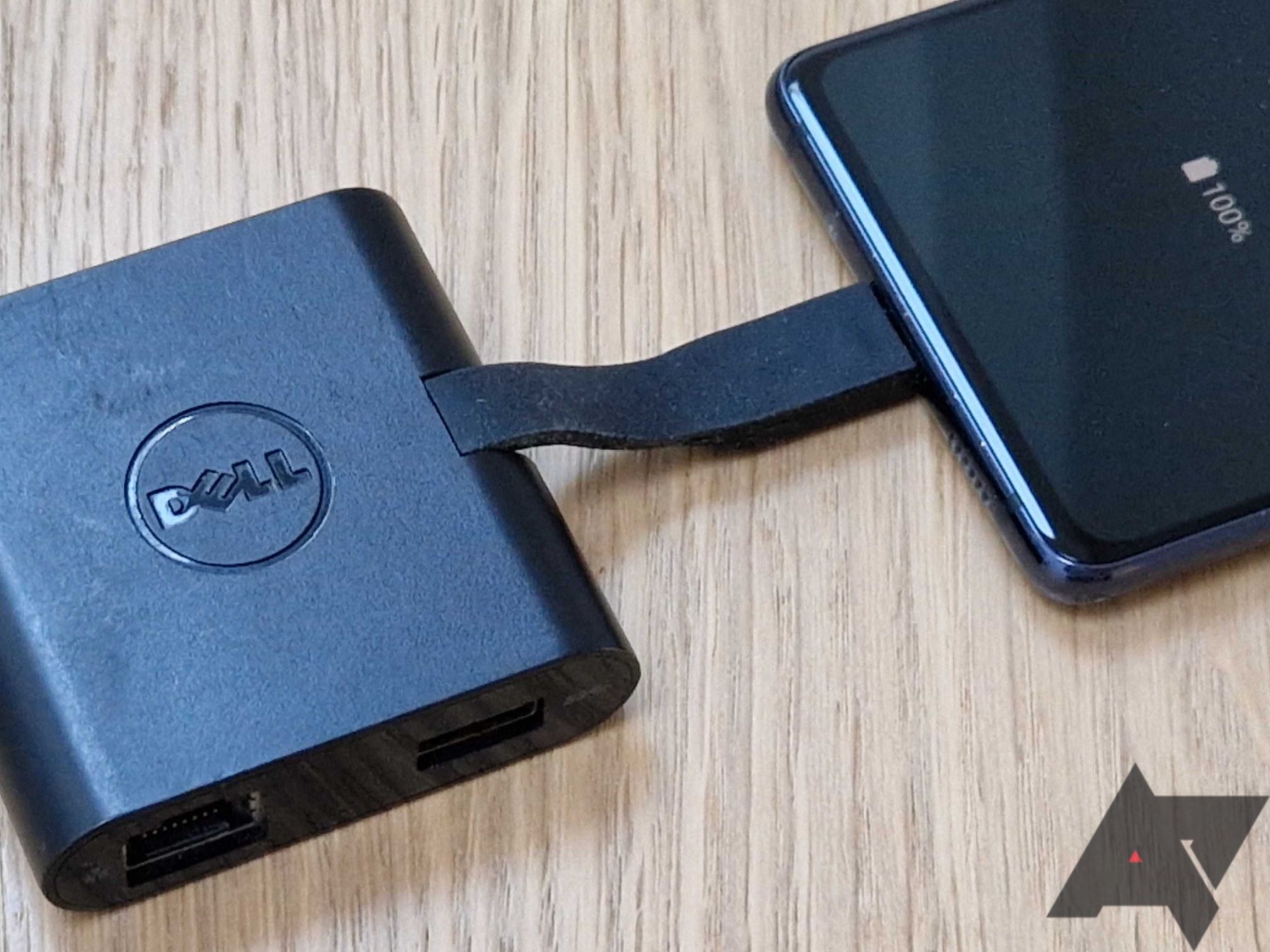
How to tether your 4G or 5G connection to your router using your Samsung Galaxy
A faulty broadband connection shouldn't disconnect your devices
Having the latest and greatest Wi-Fi router keeps the devices in your home connected to the internet and always online. The router can't do much when your internet connection goes down. While broadband disruptions have become less frequent, outages happen. How can you keep your smart home and other connected devices online when the internet is down? Grab your premium Samsung Galaxy phone and share its 4G or 5G connection with your Wi-Fi router.
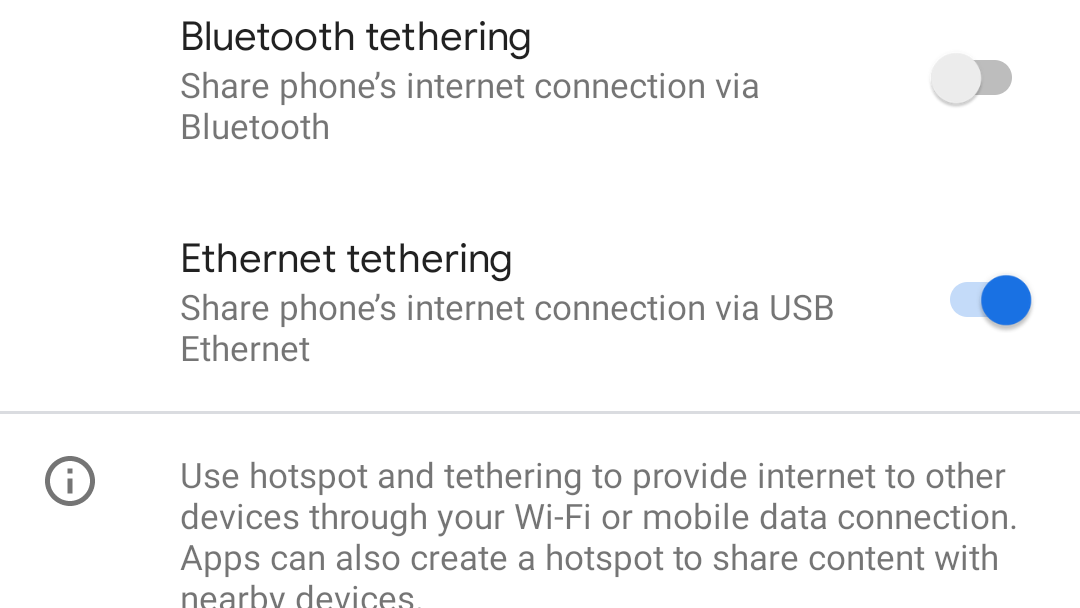
Ethernet tethering arrives in latest Android 11 Developer Preview
Share your phone's internet over a LAN cable
While most people think of tethering as creating a Wi-Fi network from your phone's cellular data connection, Android also supports sharing its internet connection over USB or Bluetooth. Those options can be helpful in edge situations (e.g. using your phone as a Wi-Fi adapter for a PC without wireless support), and now there's another choice with Android 11: Ethernet tethering.
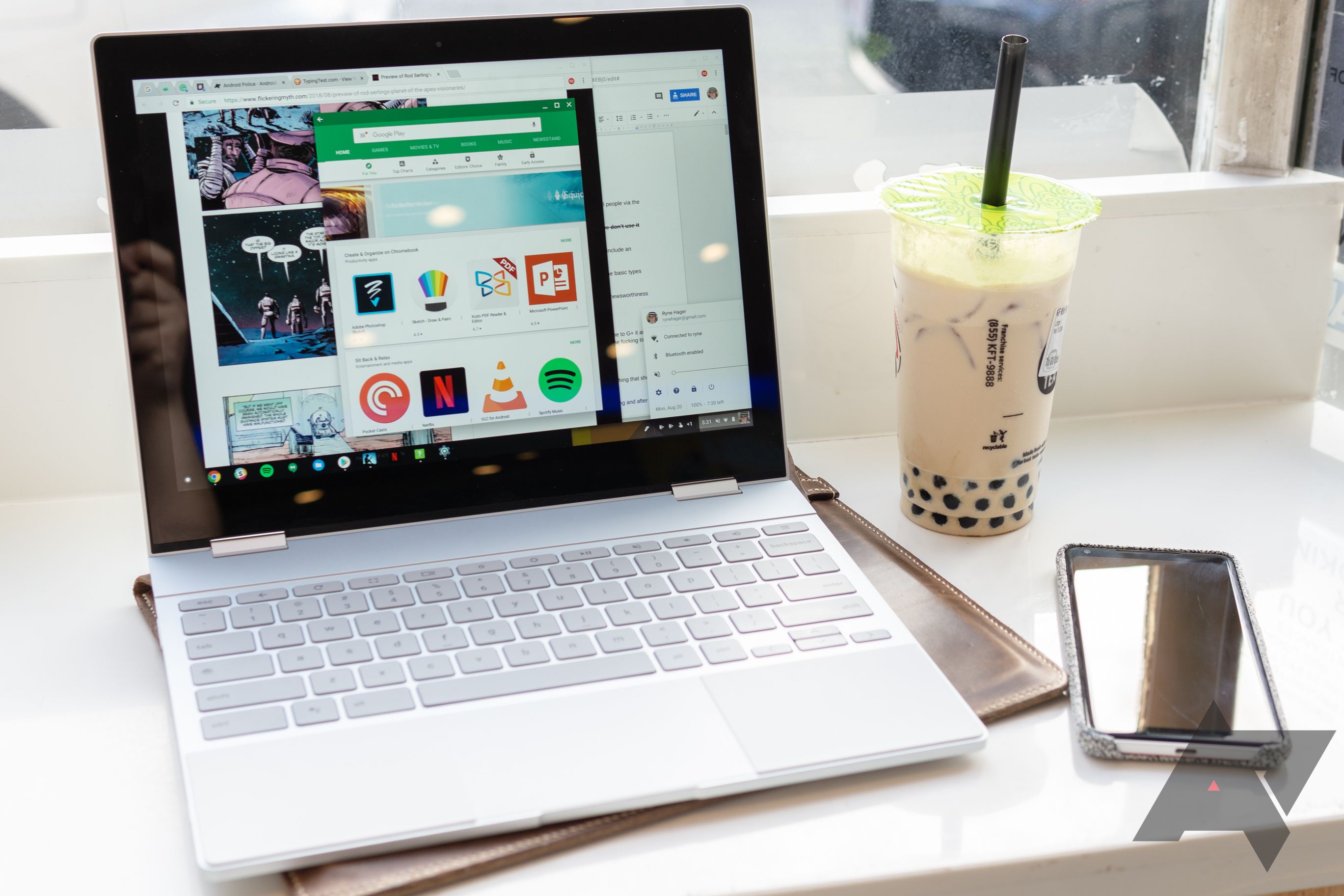
While you might assume that the relatively few people who use a Chromebook as their main computer are more likely to have an Android phone than an iPhone, it would still make sense for Chrome OS to be capable of tethering to an Apple device for the purpose of data sharing. That isn't possible at present, but it could be coming soon.
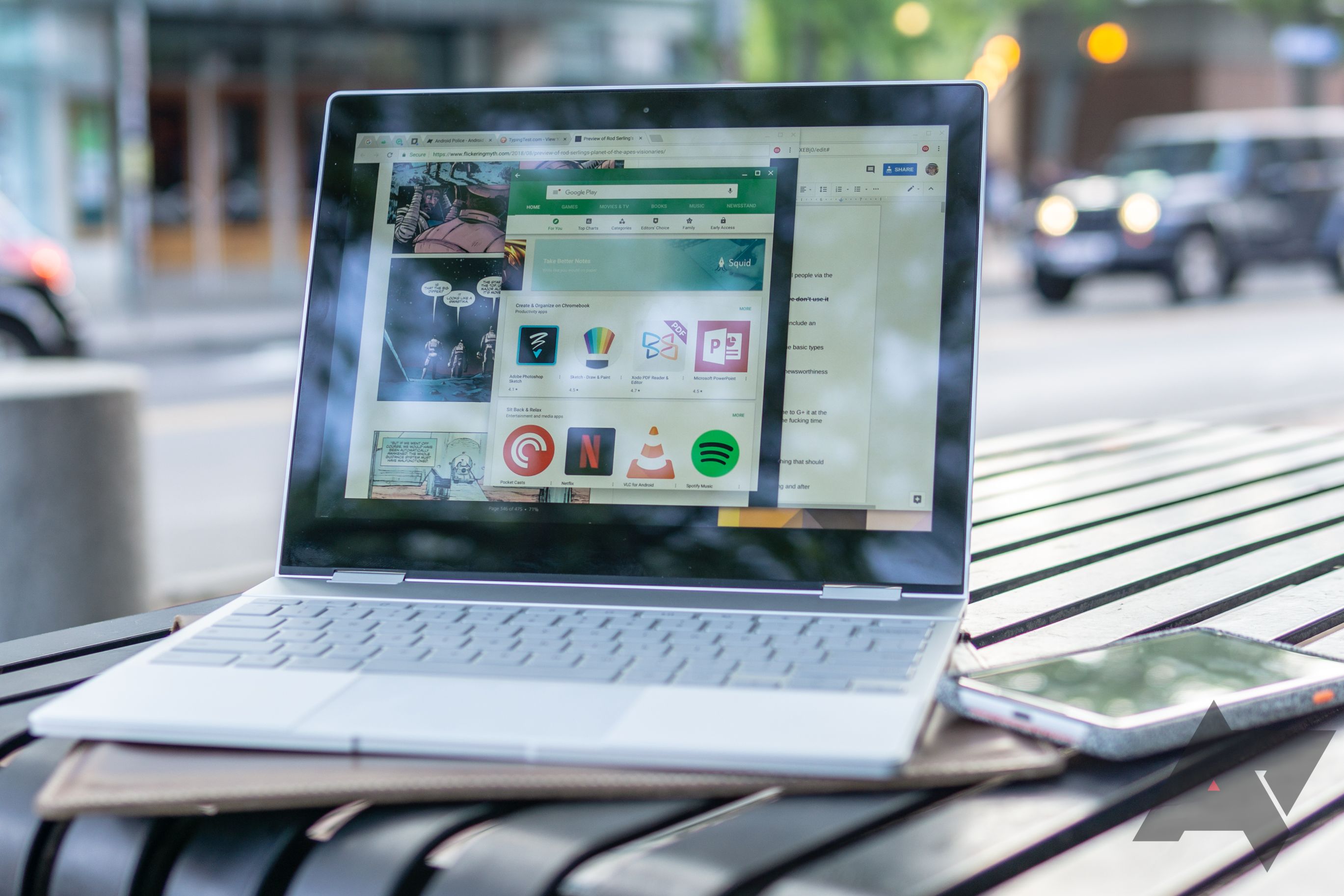
Read update
- Google has finally gotten around to sharing its list of hardware newly compatible with Instant Tethering:
Last month we spotted that Instant Tethering — a feature which allows your Chromebook to easily ride your phone's data connection when Wi-Fi isn't available — was appearing on at least a handful of non-Pixel/Nexus phones. It would appear that was an early test, as today Google is formally announcing that Instant Tethering is rolling out to 15 new Chromebooks and 30 new phones.
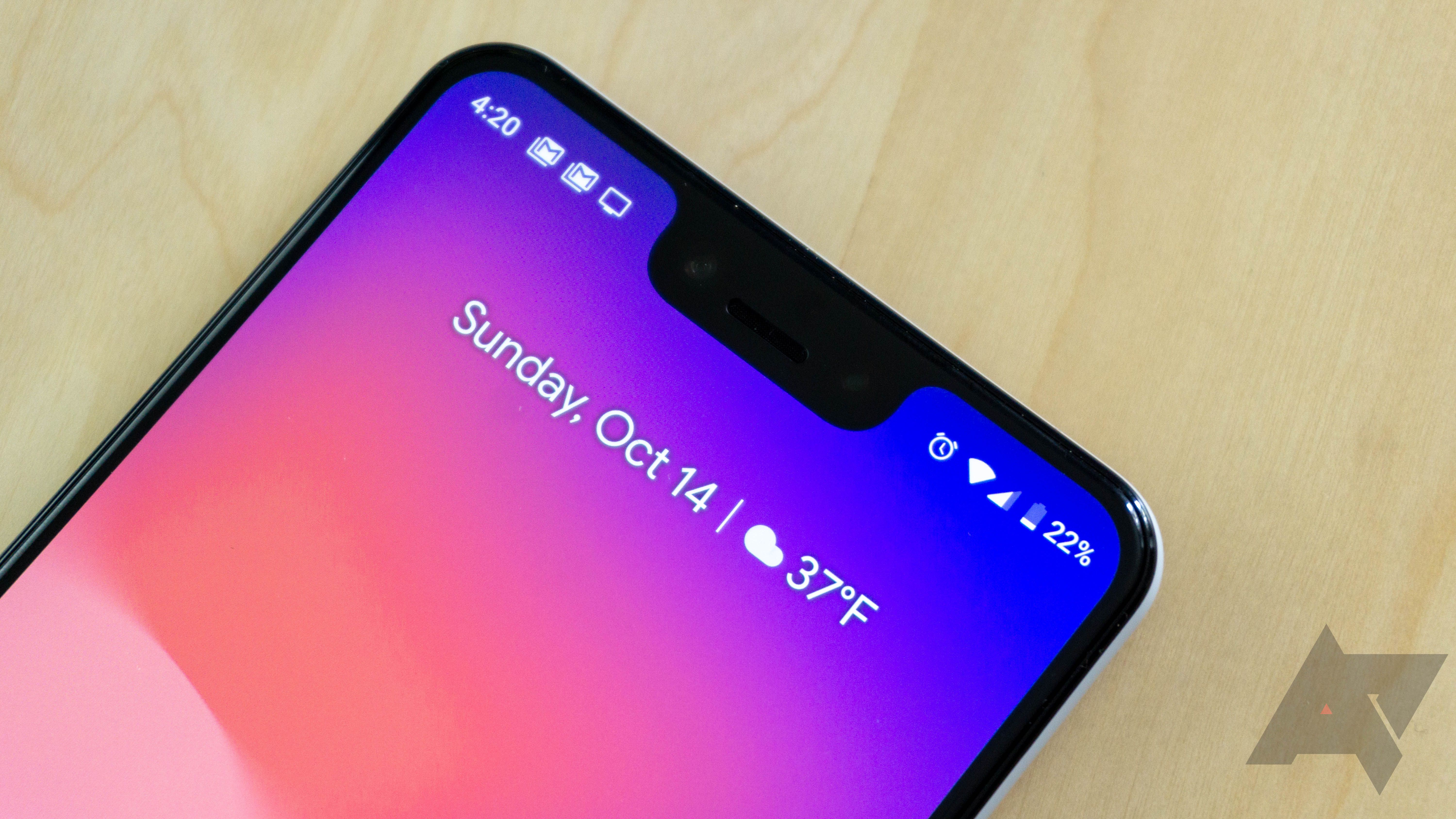
With all the recent issues cropping up on the Pixel 3 and 3 XL, it's probably about time for some good news, right? As it turns out, the Pixel 3 on AT&T has access to network features most other unlocked phones don't — including Wi-Fi calling, HD voice, and creating a hotspot.
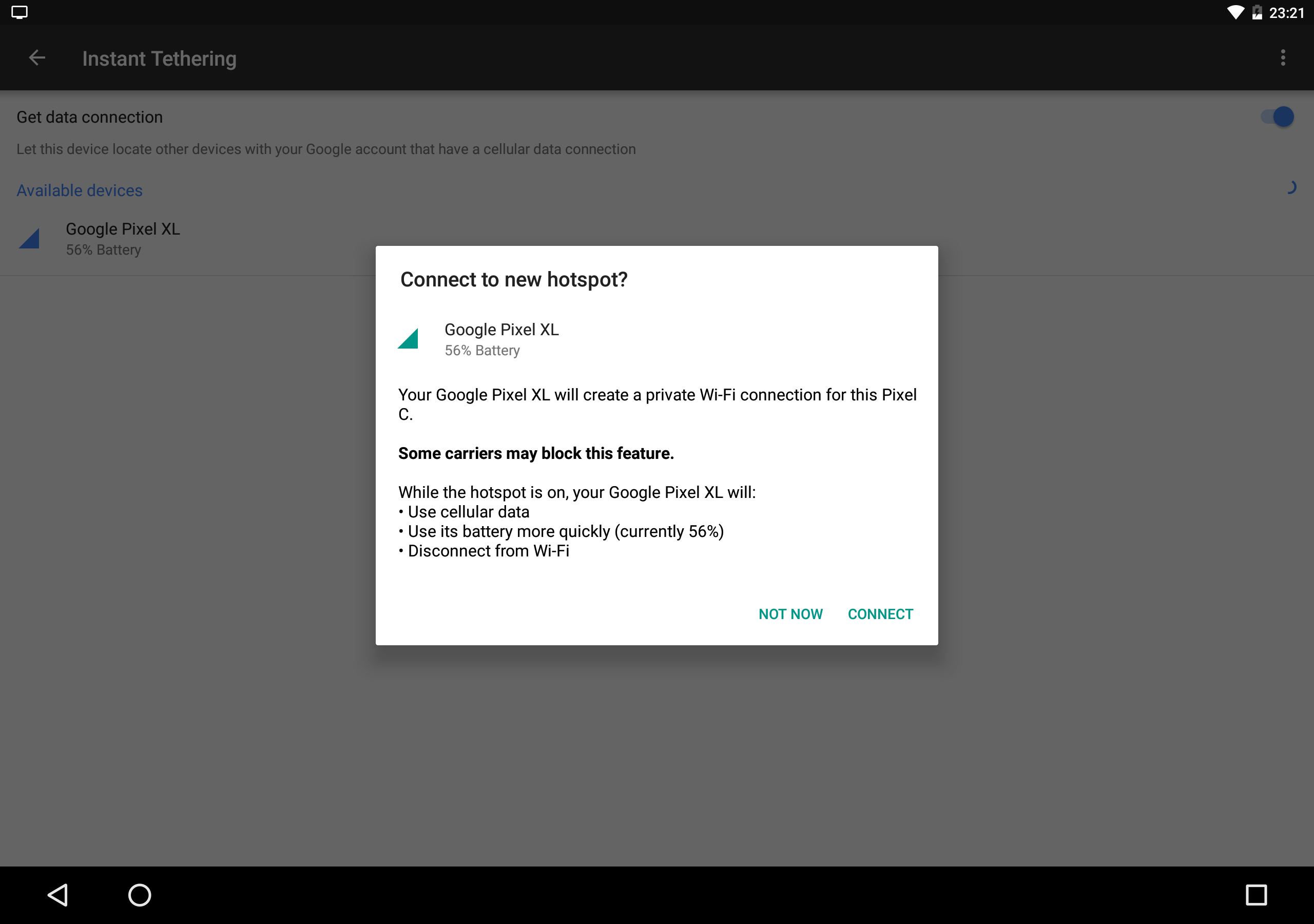
Read update
The mobile hotspot on your phone can be super useful, but it's also a little tedious to get it set up when you need it. There's a new feature rolling out as part of Google Play Services 10.2 that makes it much easier. It's essentially automatic with a feature called Instant Tethering. Not everyone will have it right away, though.
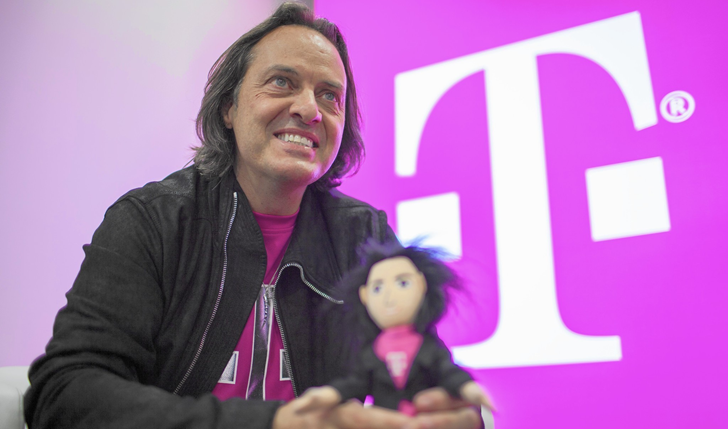
T-Mobile's bombastic CEO John Legere does not mince words. Following an impromptu Periscope broadcast on Sunday, he's published an open letter on the T-Mobile website that lays out his plan to go after those dirty, rotten data thieves. You know the ones—people who use their unlimited data lines to get unlimited tethering data, bypassing the 7GB cap. Legere seems deadly serious about this, and there's a full FAQ detailing what Tmo is doing about it.

A new leak points to big changes about to hit T-Mobile, and these are the good kind of changes. According to TmoNews, the carrier will be adding mobile hotspot to all active plans (even prepaid) on June 12th. It will also boost some hotspot caps and stop using hard caps entirely.

Google is making the best of allowing enthusiasts and 3rd-party developers early access to the next release of Android, and the result will be a less buggy release when L finally hits the grand stage. While new issues are reported each day, there's a lot of progress showing up on the Issue Tracker. Just yesterday, a burst of 18 bugs were marked as 'fixed,' following a 2-week gap without any obvious activity.

Google Patents A Laptop With A Built-In Smartphone, Let The Chromebook And Android Speculation Begin
Asus has lately become the king of anime-style transforming electronics, with their Transformer tablet line and Padfone devices. It looks like Google is paying attention, at least when it comes to conceptual hardware. US patent 8,649,821, granted to Google in February of this year, describes a laptop with a built-in and detachable cell phone, with the two working in tandem for various functions. While Android and Chromebooks aren't specifically mentioned in the patent documentation, it's easy to assume they were on the engineers' minds, since it was filed in September of 2012.

Virtual Private Networks (VPNs) aren’t the sexiest topic out there, but they are a pretty vital part of daily operations for almost every major company and many small businesses. VPNs are used to securely connect a computer, tablet, or phone to a company's private network over the Internet, thus allowing people to work remotely while ensuring strict authentication and enforcing administrative policies. Even some power users are apt to set up a VPN if they want to make their home networks accessible while they're on the road.

If you're a current or prospective T-Mobile customer and you're partial to using that data connection for more than one device at a time, there's good news. The gents at TmoNews got their hands on an internal memo that outlines bumps in T-Mobile's tethering policies that went into effect yesterday. Before yesterday, the $70 unlimited data plan included 500MB of of Smart Phone Mobile Hotspot (tethered data) and an option for a $30 2.5GB add-on. Now you can get 2.5GB for $20 extra, saving $10 a month.

WiFi Tether For Root Users Gets First Google Play Update In Nearly A Year To v3.3 Beta 2, Adds Galaxy S4 Support
If you are among the 1-5 million users that have installed WiFi Tether for Root Users, you can expect a surprise today. For the first time in almost a
If you are among the 1-5 million users that have installed WiFi Tether for Root Users, you can expect a surprise today. For the first time in almost a year, the official build in Google Play has been updated with new features and fixes. Galaxy S4 users will be especially happy.

Stock Android has had built-in tethering since version 2.2 way back in 2010, but most carrier-branded devices in the US have the option disabled. Sure, there are root apps and various workarounds, but they can be a mess. If you don't need web access, but want your devices on a local network, you're often out of luck. A new app from well-known developer Chainfire gives you back some control (on some devices), and it doesn't require root.

The rumors were true and now T-Mobile has launched its new, simplified, contract-free plans. Starting at $50/month for unlimited talk and text with 500MB of high-speed data (throttled, but sans overage fees after that), the new services allow customers to forget about counting minutes and messages and focus solely on data. This could be good or bad news, depending on your usage, but perhaps the most important aspect of these new plans is that you can get them without a 2-year commitment.

[Editorial] Here's Why All The Google Glass Skeptics Are Wrong (And A Few Ways It Might Fail Anyway)
I'm going to be up front: I want Glass. I'm thoroughly intrigued with the idea, I love the possibility of having an always-available camera that sees whatever I see, and completely hands-free Google sounds like a perfectly natural progression of the things like Google Now and voice actions. In the world where personal digital assistants seem commonplace, why should we not expect those things to be always accessible and visible?
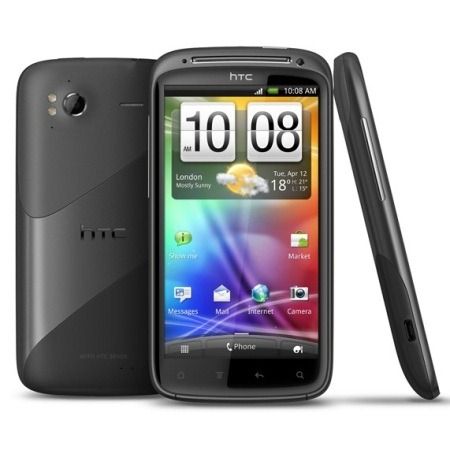
Remember the Ice Cream Sandwich update for the HTC Sensation 4G that we told you about yesterday? Turns out that it does more than just bring ICS - it also kills free tethering.
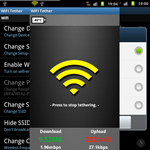
Wi-Fi Tether For Root Users V3 Lands In The Play Store, Grab It While You Still Can
Wi-Fi Tether For Root Users V3 Lands In The Play Store
Almost one full year ago, carriers threw the gauntlet down on tethering applications in the Play Store. Verizon, AT&T, and T-Mobile were among the first to lay down the banhammer, with Sprint following soon after.

T-Mobile UK just announced the plan to kill all plans for our brothers and sisters across the pond. It's called The Full Monty and it's everything that you could possibly want in a mobile plan - unlimited calls, texts, data, and tethering all for one price.

At one point, tethering was a simple process - installing a program from the Android Market would enable the feature and you were good to go. Of course, carriers didn't like this, because instead of paying them an extra $30(ish) a month to use their hotspot service, you were gaining access to the feature for free. So they had many tethering apps pulled from the Market. Not only that, but many carriers put a block directly on devices that disallowed the use of common tethering apps.










